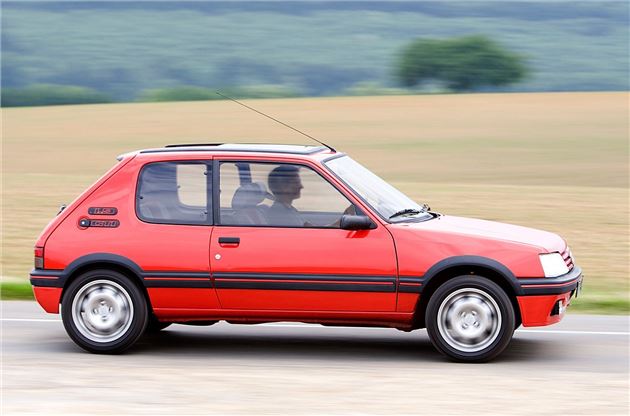How to value your classic car for insurance purposes

What is an agreed value on a classic car insurance policy?
When it comes to values, classic cars break all the rules. Sure, there are magazine and online price guides that offer you a rough valuation based on spec and condition – but what if your Ford Fiesta 1.1 Popular has a huge amount of sentimental value to you? Or you spent a small fortune on restoring it? Or it’s only got delivery mileage on?
This is where you need something called ‘agreed value’. There are limitations, of course, but this is a figure for the car’s value that is arrived at based on a conversation with your insurer and an expert inspection. And it’s especially helpful if you have an emerging modern classic that a non-specialist insurer might see as a banger rather than an investment.
That could mean your insurer pays out less than you were expecting – a lot less. In some cases, they might only offer you the trade price.
As well as classics, these types of policies are popular with owners of modified classics – whether that’s a Citroen Saxo with £25k worth of upgrades or a Ford Model A Hot Rod.
How much does an agreed value policy cost?
If you’ve spent five times the car’s value on a nut and bolt restoration, then you’re unlikely to get an agreed value for that figure. And agreed value normally costs a bit extra, so you’ll have to do some quick maths to see if it’s worth it – but it’s generally around £200 a year.
Are there any age restrictions on agreed value classic policies?
Every insurer is has a different policy. We’ve seen agreed policies offered to 17-year-old first drive drivers and policies where you have to be over 30.
How do I get an agree value policy on my classic?
As you’d expect, there are a few hoops to jump through in terms of getting the car valued. There’s some forms to fill in (an agreed value declaration form) and some documentation to return. Don’t worry, you don’t have to send over every invoice since the car was new, just the most relevant ones from the past three years. And, yes, photocopies are acceptable – as long as you can provide the originals in the event of a claim.
You’ll also need to send off some recent (i.e. taken within the past three months) colour photographs of the vehicle you’re insuring. Six is a common number: front, back, both sides, engine bay and interior. Insurers accept 35mm prints, Polaroid’s, scans or jpgs sent via email. These should be signed and dated on the reverse.
If they’re out of focus or if you’ve managed to chop bits of the car off, you’ll be asked to do it all again. Oh, and no photocopies, either.
You’ll need to check the next step with your insurer. With Lancaster*, for example, all valuations are carried out by an independent classic car expert they appointed by your insurer – a testimony from a dealer or restorer isn’t acceptable. However, Peter Best Insurance Services, may request that you obtain an independent or club valuation.
Once the process is complete, you’ll receive a valuation for your car, which is valid from the date you receive it – note that it doesn’t go back to the start of the policy.
Shopping around for agreed value policies can be difficult, so ask your fellow classic car owners or club members if they can recommend a specialist scheme.Which ever insurer you’re with, make sure it includes liability cover, breakdown and legal expenses as standard.
Some insurers do offer free cover for a small number of paid weddings a year, but even paying a small fee to extend the cover is usually worthwhile. You’ll need to notify the insurer in advance of each wedding to make certain that cover is in place, though.
What happens to my policy if I modify my car?
What happens if you decide to upgrade the engine or the gearbox? Chances are you’ll need to complete another vehicle valuation. Be aware that there are normally charges for this. You could end up paying for the valuation itself, but also an administration fee if the policy has to be updated.
You should also know that the value of your vehicle can go up as well as down. So if you’ve decided to modify the vehicle, your insurer could perceive this as devaluing the car – despite the fact that you’ve invested thousands of pounds in new high-performance parts.
Finally, valuation certificates are normally non-transferable. If you’ve change insurers, you’ll have to go through the whole process again; and if you need to make a claim before the valuation has been agreed then you’ll only receive the market value of your vehicle.
Do you have any suggestions for obtaining a classic car insurance policy with an agreed value?
More On Classic Insurance
* Sometimes we show a link with a * next to it. It means that it is an affiliate link and as a result helps HonestJohn.co.uk stay free to use. It's tracked to us and if you go through it, it can sometimes result in a payment or benefit to the site.
Compare classic car insurance quotes and buy online. A friendly service offering access to a range of policies and benefits.




